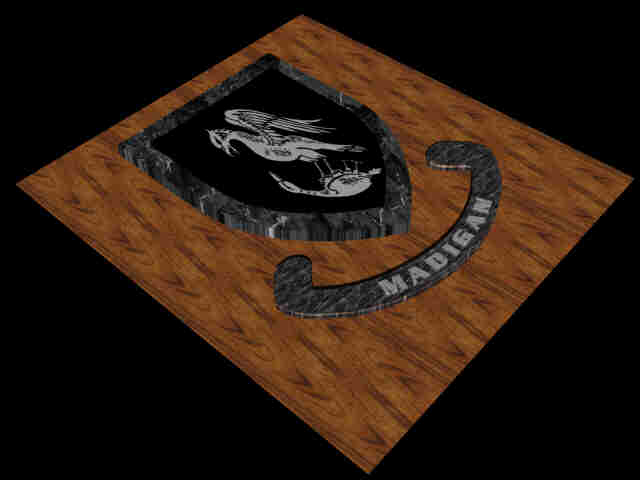Ft. Bliss
Air Defense
Artillery Museum
El Paso, TX
February 18, 2001
One of the  neat attractions in El Paso was Fort Bliss.
Originally established to house the Cavalry, for which there is
now a replica of the original structure built in the middle of
the reservation. This old adobe dwelling was made to look pretty
much like the Fort did when it was opened in the late 1800s. On
many occasion, costumed docents are present to walk you through,
giving you an insight to what life was like during the early
years. On this date, the buildings were open but there were no
docents. Actually there was no one around at all. This gave the
girls a chance to act out a little as they took up acting
neat attractions in El Paso was Fort Bliss.
Originally established to house the Cavalry, for which there is
now a replica of the original structure built in the middle of
the reservation. This old adobe dwelling was made to look pretty
much like the Fort did when it was opened in the late 1800s. On
many occasion, costumed docents are present to walk you through,
giving you an insight to what life was like during the early
years. On this date, the buildings were open but there were no
docents. Actually there was no one around at all. This gave the
girls a chance to act out a little as they took up acting in the kitchen of the house and store. On the outside, tied to
the many hitching posts and rails, were a dozen or so animals
suitable for photographing. Cast in plaster, they were most
co-operative in their never-ending stance. Across the street
in the kitchen of the house and store. On the outside, tied to
the many hitching posts and rails, were a dozen or so animals
suitable for photographing. Cast in plaster, they were most
co-operative in their never-ending stance. Across the street  was a large
building which was a museum dedicated to the art, if you would
call it that, of anti-aircraft defense. Now this was something
for the old war buff in me, and it was a subject that I had never
really seen as a separate entity. The outside was decorated with
some of the larger missiles which have been the focal point of
air defense in recent years. I selected one such monstrosity to
examine. The Spartan missile was a direct growth of the Zeus
missile. The ever increasing vulnerability of our defense system
against Soviet ICBM's demanded a more powerful version with a
longer range capability. Development
was a large
building which was a museum dedicated to the art, if you would
call it that, of anti-aircraft defense. Now this was something
for the old war buff in me, and it was a subject that I had never
really seen as a separate entity. The outside was decorated with
some of the larger missiles which have been the focal point of
air defense in recent years. I selected one such monstrosity to
examine. The Spartan missile was a direct growth of the Zeus
missile. The ever increasing vulnerability of our defense system
against Soviet ICBM's demanded a more powerful version with a
longer range capability. Development began in Oct. of '65 and soon the Spartan
missile was one of the 5 major components of the completed
Safeguard BMD (Ballistic Missile Defense). After deactivation in
Feb of '76, the Spartan missiles were removed from their
underground silos and placed in storage by the Army. On the
inside, I came across what had to be one of the first
anti-aircraft guns every used in battle. This was a 40-mm Krupp
anti-balloon gun first used in 1870 in the siege of Paris during
the Franco-Prussian War.
began in Oct. of '65 and soon the Spartan
missile was one of the 5 major components of the completed
Safeguard BMD (Ballistic Missile Defense). After deactivation in
Feb of '76, the Spartan missiles were removed from their
underground silos and placed in storage by the Army. On the
inside, I came across what had to be one of the first
anti-aircraft guns every used in battle. This was a 40-mm Krupp
anti-balloon gun first used in 1870 in the siege of Paris during
the Franco-Prussian War.
